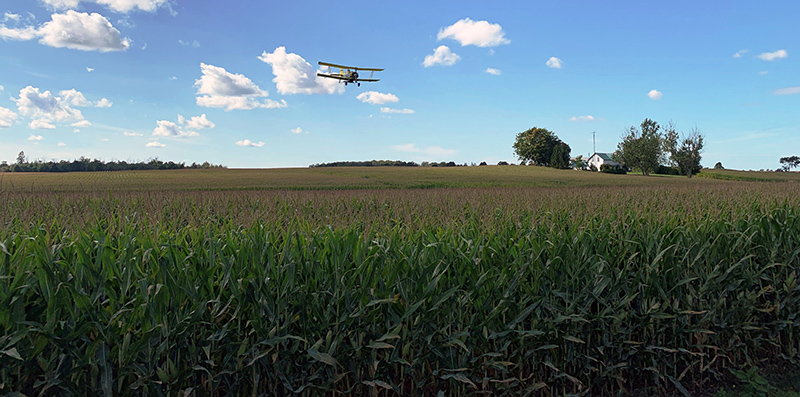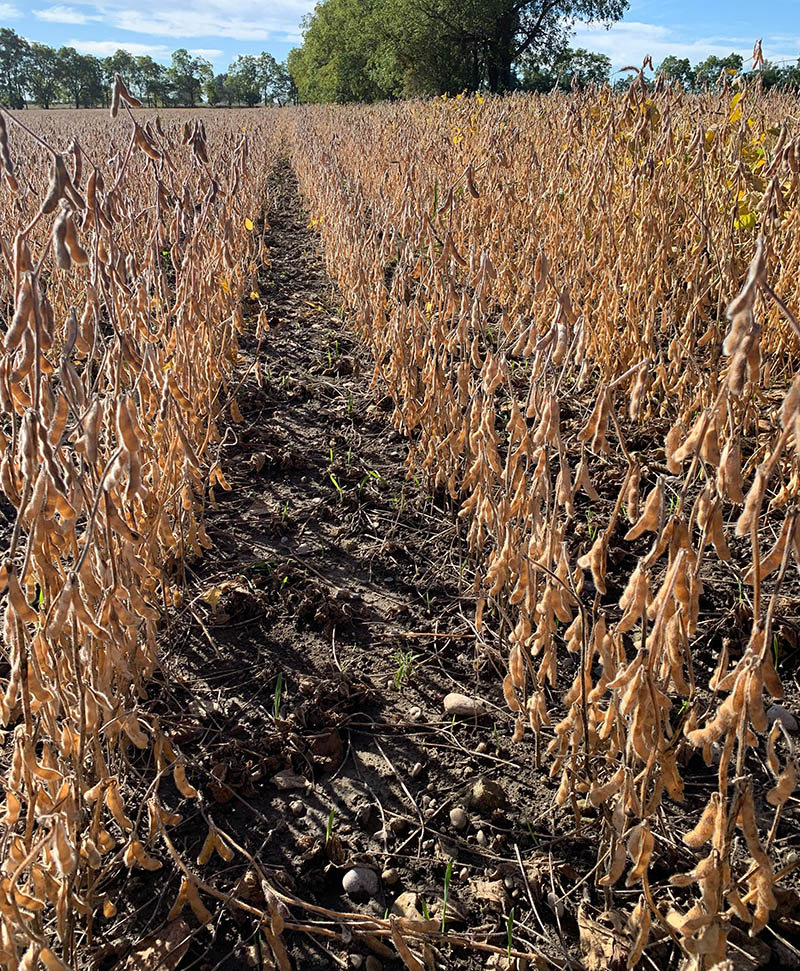Cover Crop at the Thorndale Demonstration Farm (UTRCA Weekly, October 1, 2021)
Earlier this year, the Upper Thames River Conservation Authority (UTRCA) established a new, 58 acre demonstration farm near Thorndale, Ontario. Since then, Conservation Services staff has been initiating projects to demonstrate various best management practices (BMPs) and showcase how they can improve soil health and local water quality.
One BMP project saw a cover crop planted into a soybean field this fall. Typically, a cover crop would be planted after the fall harvest. In this case, though, the existing soybean crop will be harvested late, because its planting was delayed due to tile work being done on the farm.
This presented a problem for UTRCA staff, who wanted the cover crop seed on the ground long before the soybeans will be harvested in order to get them established before the winter. Their solution: an oat cover crop was aerial seeded over the soybean crop!
Paul Hodgins, of General Airspray Ltd out of Lucan, completed the aerial seeding for the UTRCA and says they typically interseed cover crops into 3000-5000 acres each year. He shared, “We have been flying cover crops for about 7-8 years and the most common applications are into standing corn and soybeans, although we also have a client who has flown a cover crop into pumpkins the last two years. The airplane is an option for interseeding a cover crop when you otherwise can not get into the field, when conditions are not good or when you no longer want to be driving through the crop.”
Flying on a cover crop, rather than waiting until after harvest, ensures that the cover crop gets seeded and allows for a longer growing season. It also ensures a better seed to soil contact. The aerial seeding at the demonstration farm was done just before the soybean leaf drop, so the seeds can benefit from the moisture that the fallen leaves help to keep in the soil. The rain combined with the warm, sunny weather immediately following the planting means the oats are already growing very well.

In general, adding a cover crop provides more ground cover over the winter and better erosion control than the soybean residue alone. Cover crops can protect the soil, improve soil health, and immobilize nutrients to supply to subsequent crops. Many different plant species can be used as cover crops, each providing their own suite of potential benefits.
A section of the demonstration field has been left with no cover crop. Staff will be able to look at the impact of both cover crop and drainage type (controlled vs conventional) on next year’s corn yield.
The Thorndale Demonstration Farm project received financial support from many sources, including the Government of Canada through the federal Department of Environment and Climate Change, and the Ontario Ministry of Agriculture, Food and Rural Affairs, as well as ADS Canada (formerly Ideal Drain Tile), Agri Drain Corporation, Bluewater Pipe Inc, Hickenbottom Drain Inlets/Maaskant Brothers, and McCutcheon Farm Drainage.
Other supporters include the Land Improvement Contractors of Ontario, Middlesex Federation of Agriculture, and Middlesex Soil and Crop Improvement Association.


